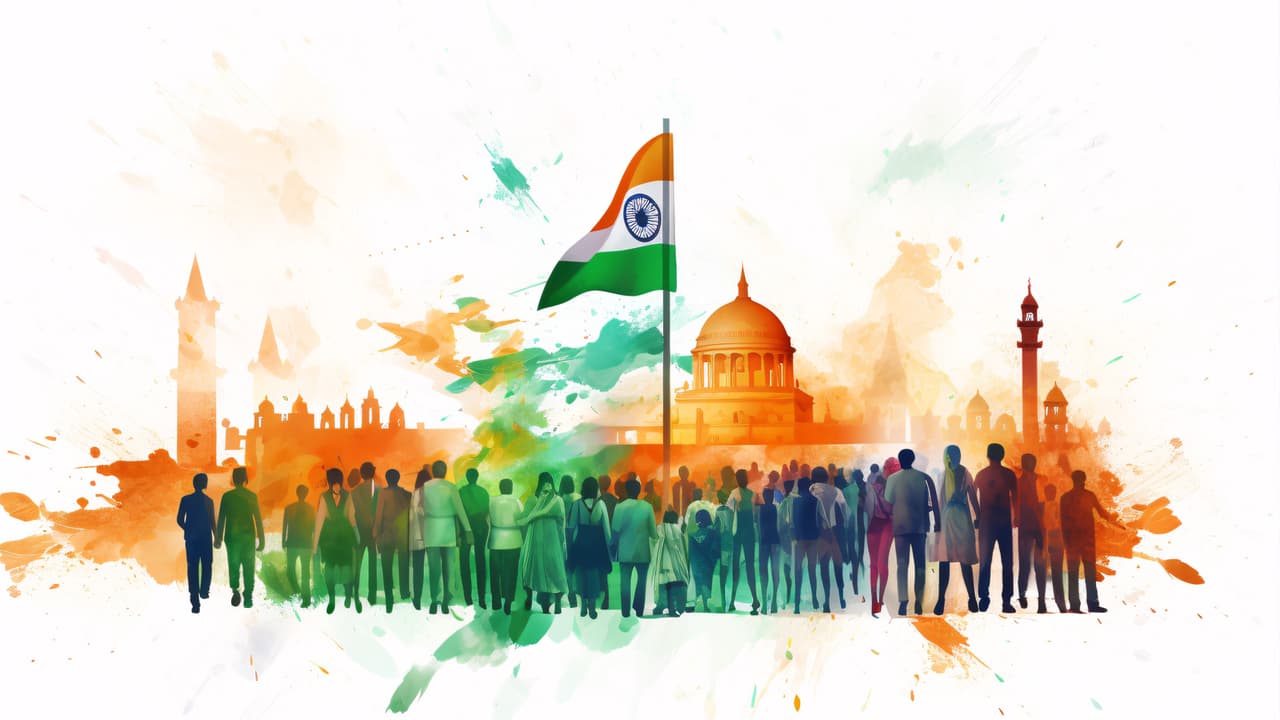From the birth of a new nation in 1947 to becoming a global economic and technological force in 2025, India’s 78-year journey is one of resilience, innovation, and transformation. This Independence Day, Revisit milestones that shaped nation progress.
On Independence day lets look at our history, From the freedom fight of 1947 to the growing economy of India in 2025, it has shown a resilient spirit, transformation, and ambition while keeping intact the heritage of culture and values. This journey of India during 78 years has seen unparalleled transformation in territories including polity, economy, technology, and, finally, as a global power.
India’s Journey from 1947 to 2025:
Foundation: 1947-1960
Independent India started its journey as a nation on August 15, 1947 which is now celebrated as Independence Day, with Jawaharlal Nehru becoming the first Prime Minister. Nation-building, Constitution drafting (1950), creation of democratic institutions, and adoption of mixed economy were the characteristic features of the early years. The development of the economy was through high-value projects, such as dams, steel plants, steel mills, and educational institutes.
1960-1990: Problems and Solutions
Wars with neighbor countries, food shortages, and economic hardships during this period; however, in the 1960s, India became self-sufficient in food production as it witnessed the Green Revolution. Economic tribulations in the late 1980s finally led to the 1991 Economic Liberalization, which opened India to free-market reforms and thus introduced the country to global trade and investment.
1990-2010: Offsetting the Rise of a Global Player
The 1990s and early 2000s were crucial for India as the service base and IT hub of the country grew. Cities such as Bengaluru, Hyderabad, and Pune emerged as global tech centers. Rapid urbanization coupled with better infrastructure enabled the growing middle class to transform into an economy.
In 1998, India even declared itself a nuclear power, asserting its stature on a global scale after Independence.
2010-2025: Digital Transformation and Influence on the World
The past 15 years have presented India in the prospects of a country embracing a digital revolution with platforms such as Digital India, UPI payments, and mass internet availability. Additional ambitious space missions include Chandrayaan-3 and Aditya-L1.
Such an economy puts India among the top five in GDP worldwide and makes it an important actor in the diplomatic field, climate talks, and tech innovation.
Social & Cultural Progress
Education: Literacy rates have improved from 12 percent in 1947 to over 77 percent in 2025.
Health: Expanded public health programs and greater life expectancy.
Women Empowerment: Increased representation in politics, business, and sports.
Sport: Achievements in cricket, hockey, badminton, wrestling, and the Olympics.
Challenges that still exist
On Independence Day, India is progressing well, but some challenges are still there that include poverty, inequality of incomes, environmental concerns, unemployment, and congestion in urban areas. The country should ensure that the next phase of its growth focuses on sustainable, innovative, and inclusive growth.
From a newly-independent country grappling with poverty to a self-assured global power in 2025, India’s journey of 78 years can be summed up in terms of resilience and vision. The road ahead promises even far greater achievements if the nation continues to progress with memory to its diverse heritage.
